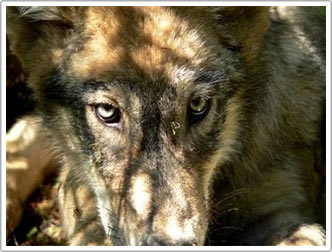The type of Northern wolf from the list of endangered
Recently, the US government plans to remove northern gray wolves from the list of endangered species. The US said that this was a success in preserving a wild animal. Currently in Idaho, Montana and Wyoming, it is estimated that there are about 1,500 wolves.
A US authority said: 'Currently gray wolves in the northern mountains are growing and multiplying very strongly. Therefore, they do not need the protection of the Endangered Animals Act anymore. The recovery of this animal is really a success story of conservation. '
However, efforts to restore wolves have not been responded to by livestock owners. People in the three states, even some leaders, expect the number of animals to fall further.
These states still allow hunters to hunt these animals when their numbers are significantly reduced. It is for this reason that environmentalists are angry and prepare a lawsuit to remove gray wolves from the list of endangered species. They also said that it is too early to halt the protection of the federal government with this predator.

Gray wolf (Photo: AP)
Federal officials say it seems that the plans of the three states of Idaho, Montana and Wyoming will continue to maintain the future of this wolf species in quantities ranging from 900 to 1,250.
Dogs often hunt and eat many animals when they expand their territory. As a result, ranchers and wild beast owners are also hunting more at the same time as permitted by the Red List of Animals Act.
Since the late 1980s until now, 724 wolves have been legally killed and at the same time there has been illegal hunting. Even so, the number of wolves has increased continuously at a rate of 24% per year.
Wolves almost disappeared completely in the western region because the government had a program to wipe out wolves in this area in the 1930s (including plans to widely poison wolves). In the late 1980s, wolves only had territory around Glacier National Park, Monata State, about 200 square miles near the Canadian border.
In 1974, wolves were listed as one of the red-listed species, the government lost more than $ 27 million in efforts to conserve and restore this species in the northern mountains.
Bangs said from 66 wolves returned to Yellowston and Central Idaho National Parks in the early 1990s, the number of these animals has now increased rapidly. The territory of the wolf species has now expanded to 113,000 square miles.
Free hunting can significantly reduce the number of wolves. Free hunting reduces the opportunity to expand borders to other states like Utah, Colorado, Oregon and Washington. However, a freelance biologist conducting research on wolves says he will be "shocked " if the animal is no longer in the red list of endangered species.
- Wild beauty of polar white wolves
- Offer to put polar bears on the list of endangered
- Endangered animals
- Korea: successful mirror wolf
- Discovered 2 new gray wolves in Canada
- 10 endangered species in 2012
- The trait of wolf dogs is not suitable for pets
- Preserve 5 endemic endangered plants
- Decode the screeching sound of wolves
- Recognition technology wolf tru
- The 20-year-old girl's wolf taming secret
- Green butterflies on the list of endangered
 Animal 'suffering' after hibernation
Animal 'suffering' after hibernation Why do goats climb well?
Why do goats climb well? Scientists were surprised to see chimpanzees eating turtles
Scientists were surprised to see chimpanzees eating turtles Giant catfish died deadly due to drought in Thailand
Giant catfish died deadly due to drought in Thailand